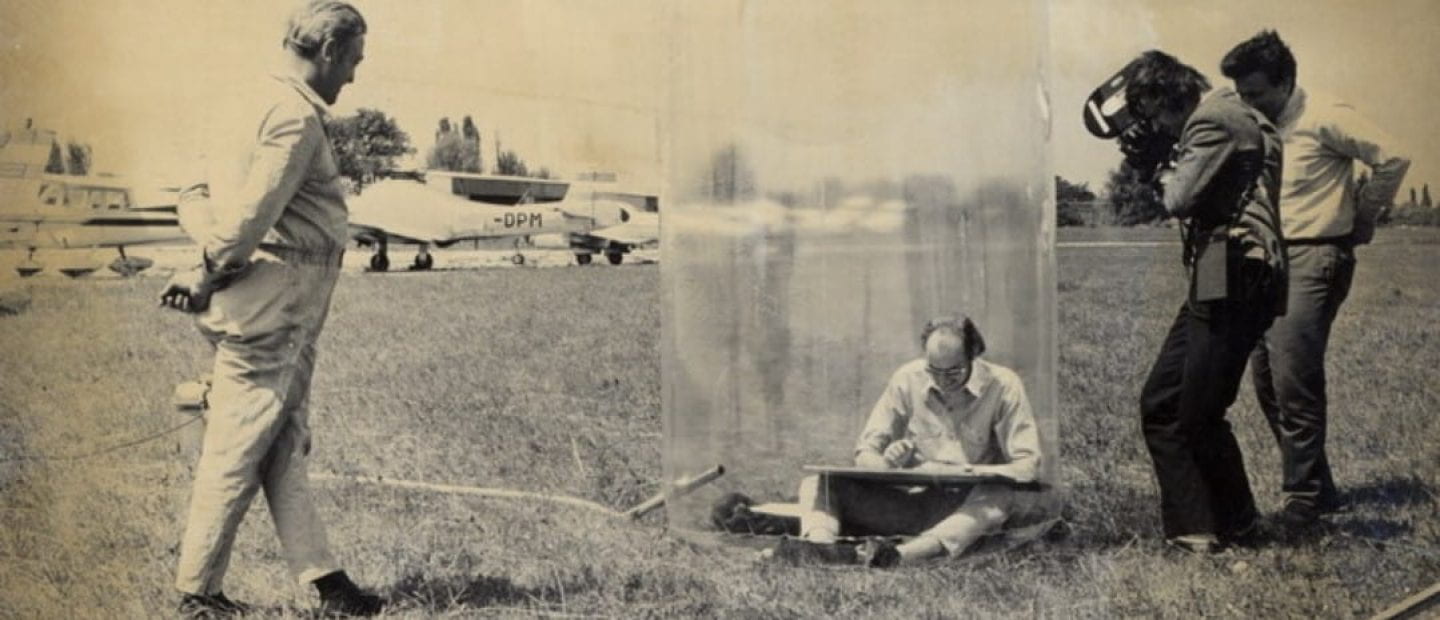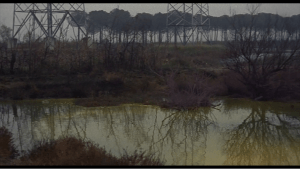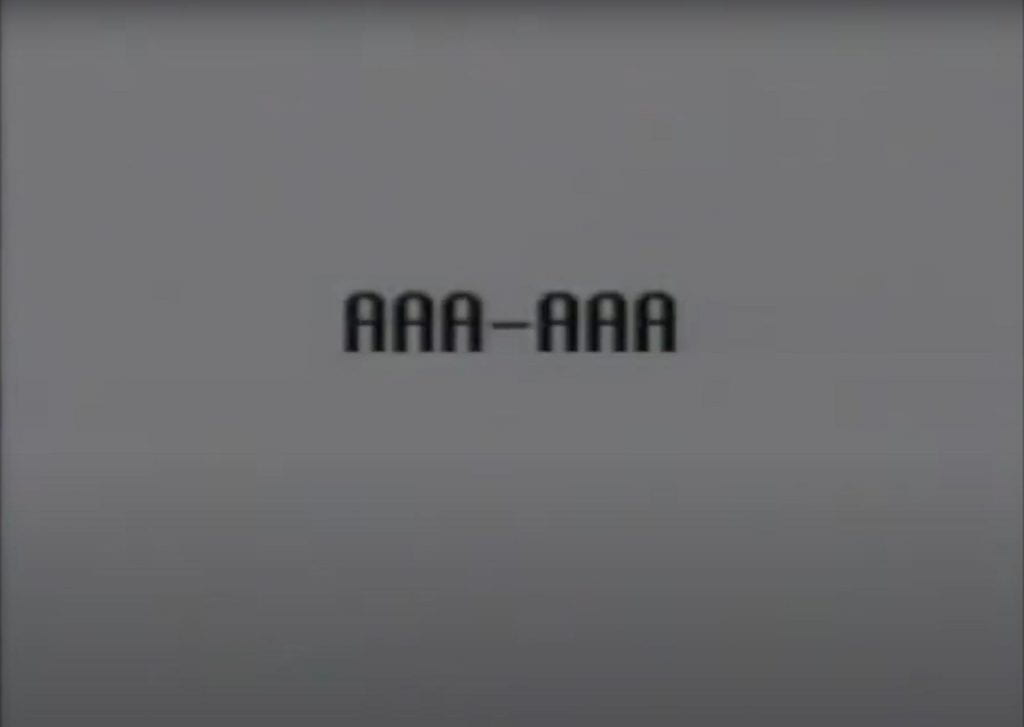Juliana Spahr’s Respiratory Solidarity
(Content warning in NYT image detail for injury).

Earthrise, NASA, Dec. 24, 1968. <https://www.nasa.gov/multimedia/imagegallery/image_feature_1249.html>

“U.S. ATTACKED,” New York Times, Sep. 12, 2001. <https://archive.nytimes.com/www.nytimes.com/packages/html/nyregion/9-11imagemap.html?mcubz>
For my post I’d like to offer a brief sketch, a reading of Juliana Spahr’s “poemwrittenafterseptember11/2001.” On September 12th 2001, the New York Times ran on its front page the bold statement: “U.S. ATTACKED” accompanied by an image of the impact to 2 WTC as 1 WTC smokes beside it. Within 56 minutes of the taking of this image, 2 WTC would become the first tower to collapse resulting in the release of approximately 2,500 contaminants into the air in New York, including known carcinogens, the impact of which are not definitively known to this day, but are widely understood to have been the cause of a number of fatal or debilitating diseases experienced by many survivors and NYC inhabitants in the aftermath of the September 11th attacks. Although the Environmental Protection Agency gave misleading statements regarding air quality in the area at the behest of the Bush administration, air quality was not concluded to have returned to pre-9/11 levels until June 2002. Some names listed on the memorial at Ground Zero are deaths imminently and directly linked to exposure to toxic dust. Nominally, “poemwrittenafterseptember11/2001” concerns the contingencies of breathing precipitated in part by this event. What is clear, however, is that Juliana Spahr’s poem reaches far beyond this in scope and, I would like to argue, sets as its task the articulation of the limits of the world experienced in the body and out of it, and the politics of respiratory (that is, living) solidarity evinced by such a worlding. It is not a coincidence, to me, that the New York Times lopped off the definitive article when it proclaimed “U.S. ATTACKED” and gave rise to the easy misreading “US ATTACKED.” This is the central predicament of Spahr’s poem – who is us and how are we bound? Indeed, in the note accompanying the other poem contained in This Connection of Everyone with Lungs, “poemwrittenfromnovember30/2002 tomarch27/2003,” she writes:
September 11 shifted my thinking in this way. The constant attention to difference that so defines the politics of Hawai’i, the disconnection that Hawai’i claims at moments with the continental United States, felt suddenly unhelpful. I felt I had to think about what I was connected with, and what I was complicit with, as I lived off the fat of the military-industrial complex on a small island. I had to think about my intimacy with things I would rather not be intimate with even as (because?) I was very far away from all those things geographically. (13)
Prior to moving to Brooklyn, New York in August 2001, Spahr had lived on Hawai’i for a number of years, working at University of Hawaii, Mānoa. Spahr then moved back in Summer of 2002 as marginal employment became harder to come by in the wake of 9/11. Regarding the toxic aftermath of the collapse of the tallest buildings on Manhattan, in the poetic semi-fictional memoir The Transformation, Spahr writes that:
Words like asbestos, lead, mercury, dioxins, furans, hydrogen cyanide, benzene, xylene, chromium, polychlorinated biphenyls, aromatic hydrocarbons, and volatile organic compounds entered their daily conversations. … They felt ill for months. Ill because of breathing. Ill because of what was happening and the operations to come with names like Operation Industrial Sweep, Operation Chamberlain, Operation Sweeney, Operations O.K. Corral, Operation Iron Hammer, Operation Eagle Curtain, Operation All American Tiger, Operation Ivy Cyclone, Operation Ivy Cyclone II, Operation Boothill, and Operation Rifles Blitz. They didn’t wear masks like some of them did. Instead they tried to avoid the air. They tried to avoid breathing. It did not work. The air continued to enter their lungs like those operations that continued to be planned without their consent and despite their protest. They could hold off breathing for a few minutes every now and then but then mere seconds later they would be gasping for breath on the street corner. (150)
Not only does illness here, in this passage, serve to highlight the contingency of respiratory health, but also imbricates into the scene the unpleasant contingencies of the military industrial complex with national life and the “US” of “U.S. ATTACKED,” thusly implicating respiration as such as the ultimate and base condition that reveals complicity and contingency in an ecological and political sense. This is how I can get in to thinking through what I called earlier respiratory solidarity that I’d like to show is expressed in the prosody of “poemwrittenafterseptember11/2001.”
Spahr first identifies the unit of the body that she subsequently problematises through its biological boundary and specificity, its circulation and the accumulation of bodily processes, and calls it “shape” (3). Indeed, as Heather Milne has written: “as soon as Spahr orients the perspective of the poem through a meditative rootedness in the corporeal, she begins to develop a spatial poetics that connects body to world” (206). Spahr goes on to do this by explaining that extra to shape is “space” (4), a space that moves in and out of the shape as the shape compels it in and out of the lungs; everyone with lungs does this and so body and world – that is, shape and space – become coterminous. The space that is implicated into this scene grows through the central refrain of the poem in its continual and gradual iterations, first as:
as everyone with lungs breathes the space between the hands and the space around the hands in and out (5)
and, last, as:
as everyone with lungs breathes the space between the hands and the space around the hands and the space of the room and the space of the building that surrounds the room and the space of the neighborhoods nearby and the space of the cities and the space of the regions and the space of the nations and the space of the continents and islands and the space of the oceans and the space of the troposphere and the space of the stratosphere and the space of the mesosphere in and out. (8)
Having gone through 12 permutations to get there, each time adding a new scale on which space and its boundary are figured. If it seems stupid to you that the increasing incommensurability of scale should suddenly cease at the mesosophere, it probably should. It is not, however, arbitrary. The US Air Force and NASA, rather than using the Kármán Line at 100km up (in the lowest reaches of the thermosphere), use their own definition of the edge of space at 80km up (that is, in the upper reaches of the mesosphere). This line, the edge of space, is generally considered to be the de facto point at which national airspace ends and international airspace begins, although there is no international law specifying the limit. Spahr’s iterative and accumulative, potentially Lucretian, cosmography is thus foreclosed by the national. It is not true, for example, that one can breathe the space in the mesosphere just as easily as the space between yourself and I, if only for the reason that it would prove fatal. Regarding repetition and the refrain in Spahr’s work, Dianne Chisholm has suggested the following:
She invents a framework of repetition that houses a thinking that comes uncannily unhinged, and that escapes the bounds of common sense and lyrical expression.
She explains further that:
A refrain that builds houses and habitats only to open them to chaos and complexity and onto larger, even global, territories, where they undergo deconstruction even as they continue to build, is not, or not just, a poetic refrain. (122)
This outward movement, the concentric circles of respiratory influence that form the space of the poem, is particularly important. Spahr creates a circuit of reciprocity in which the lungs breathing (that is, all lungs) are persistently drawn into the scene of accumulation for the simple fact of their rhythmic and regular necessity of expansion and contraction. “poemwrittenafterseptember11/2001” thinks in accumulation that can only be mobilized by Spahr’s repetition, that is, as centering the corporeal over the cosmic. As the incommensurability of the in and out of space moves toward crescendo, it is consistently wrenched back to specificity in the lungs of everyone. In her recent book The Politics of Everybody, Holly Lewis writes that:
The only way to mount a challenge against a global system – a global militarized system – is through a politics that addresses global subjects and asserts that there is commensurability between them… Solidarity among such a large subset of people is bound to be a fluid, internally shifting collective political subject. That requires a principle of minimal connection between political actors. Minimal connection simply means that grounds for solidarity are possible. (11)
The grounds for solidarity, in Spahr’s poem, are lungs. This might seem obvious. That is because, in Lewis’s words, lungs are the minimal connection. Eschewing trite universalism, Spahr’s solidarity avoids totality by working from the body out (and consistently calling attention to its contingency).
In John Milton’s Paradise Lost it is Satan, loafing over the boundary between God’s created universe and its surround in the chaos there, observing the entire universe on his trek out of hell towards creation, that at the end of Book 2 observes:
And fast by hanging in a golden Chain
This pendant world, in bigness as a Starr
Of smallest Magnitude close by the Moon. (2.1051-1053)
Satan, here, whose eyes we inhabit perceiving the limit and scope of the universe, resorts to an earthly metaphor to attempt commensurable scale, revealing his mistake and overstep. As Joe Luna has observed:
And what appears at first sight to be a moment of appropriate comparison is in fact a juxtaposition that deftly proves the impossibility of such a thing. Pretension to universal objectivity in these lines remains just that, earthbound, resplendent not with the prospect of a new cosmos to be fought for and conquered but with further damning proof of Satan’s essential folly. (113)
Spahr herself, while not anything like Satan, desperately seeks not to repeat his folly. While consistently disclosing our groundedness as her refrain expands our connection in space to the edge of national airspace itself, Juliana Spahr reveals that the grounds of this connection of everyone with lungs is not made of “universal objectivity” or the abstract condition of liveliness, but the earthly action of respiration that serves to underline our mutual contingency not just with each other, but the forces that enclose its limits when an unembodied US is attacked on the New York Times front page. There is nothing cosmic about it when she writes that “In this everything turning and small being breathed in and out by everyone with lungs during all the moments” (8). This is what leads the poem to its turning point, to the realisation of contingency in “How connected we are with everyone” (9) that makes possible the articulation of the toxic cloud left by the wreck of the World Trade Center. Immediately following the realisation of respiratory solidarity and contingency, Spahr writes:
The space of everyone that has just been inside of everyone mixing inside of everyone with nitrogen and oxygen and water vapor and argon and carbon dioxide and suspended dust spores and bacteria mixing inside of everyone with sulfur and sulfuric acid and titanium and nickel and minute silicon particles from pulverized glass and concrete.
How lovely and how doomed this connection of everyone with lungs. (9-10)
Spahr writes in The Transformation of the cloud that “There was obviously poison in it” (149). It is not the obviousness of this that foregrounds the principle of minimal connection between political actors as the basis for solidarity that appears in Holly Lewis. In “Breath and Precarity,” Nathaniel Mackey writes that “When breath becomes an object of attention, no longer unremarked on, no longer taken for granted, no longer an uninspected given, anxiety is also in the air” (5). This fact, the anxiety of attention to the contraction and expansion of the lungs, is deeply registered by Spahr; not in the reflection of a lyrical anxiety privileging a stable embodied shape, but writ large in the subject of lyric of “everyone with lungs” in space, developing the embodied politic, contra to lyric, of respiratory solidarity achieved through recognition. In “poemwrittenafterseptember11/2001,” Spahr dilates this anxiety to collective paranoia in order to make legible the horror of breathing in the obvious poison of 9/11’s remnant in air. That this anxiety must become collective, that is, between everyone with lungs, is the predicate for breathing’s movement from solitary act to respiratory solidarity in our collective environ. That is, we must foreground the limits of our world, our us, our mutual contingency in expansion and contraction in “How connected we are with everyone” before the gravity of our breath is legible.
James Garwood-Cole
Works Cited:
Chisholm, Dianne, “Juliana Spahr’s Ecopoetics: Ecologies and Politics of the Refrain,” Contemporary Literature, 55:1 (Spring 2014), pp. 118-147, <https://www.jstor.org/stable/43297949> [accessed 11/9/2020]
Lewis, Holly, The Politics of Everybody: Feminism, Queer Theory, and Marxism at the Intersection (London: Zed Books, 2016)
Luna, Joe, “Space | Poetry,” Critical Inquiry, 43:1 (Autumn 2016), pp. 110-138, <https://doi.org/10.1086/688292> [accessed 11/11/2020]
Mackey, Nathaniel, “Breath and Precarity,” In Poetics and Precarity, ed. by Myung Mi Kim and Cristanne Miller (Albany, NY: State University of New York Press, 2018), pp. 1-30
Milne, Heather, “Dearly Beloveds: The Politics of Intimacy in Juliana Spahr’s This Connection of Everyone with Lungs,” Mosaic, 47:2 (Summer 2014), pp. 203-218, <https://doi.org/10.1353/mos.2014.0019> [accessed 11/9/2020]
Milton, John, Poetical Works, ed. by Douglas Bush (London: Oxford University Press, c1966)
Spahr, Juliana, This Connection of Everyone with Lungs (Berkeley and Los Angeles, CA: University of California Press, 2005)
__________, The Transformation (Berkeley, CA: Atelos, 2007)




Leave a Reply
You must be logged in to post a comment.